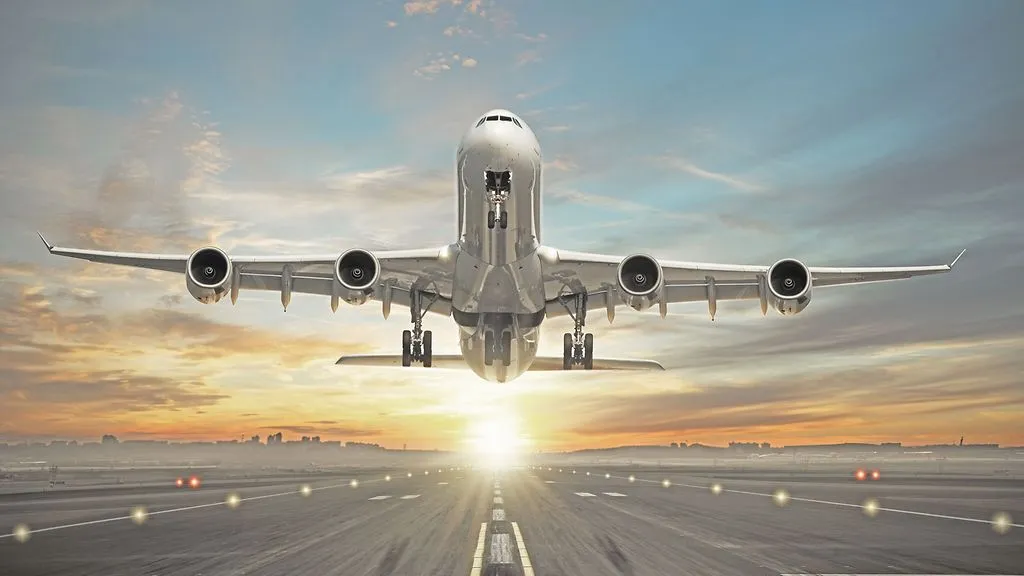Aerospace and Aviation
Aerospace and aviation are sectors within the broader electronics industry that encompass the design, development, manufacturing, and operation of aircraft, spacecraft, satellites, and related systems.
Aerospace and aviation involve the creation and utilization of technology to navigate the Earth's atmosphere and outer space. This includes a wide range of vehicles, systems, and components designed to transport passengers and cargo, conduct scientific research, facilitate communications, and enable defense and security operations.
Applications
- Commercial Aviation: The commercial aviation sector includes airlines, aircraft manufacturers, and associated businesses involved in passenger and cargo transportation. This encompasses a vast network of airlines, airports, maintenance facilities, and support services that facilitate global air travel.
- Military Aviation: Military aviation involves the design, development, and operation of aircraft and systems for defense and security purposes. This includes fighter jets, bombers, reconnaissance aircraft, unmanned aerial vehicles (UAVs), and helicopters used by military forces worldwide.
- Space Exploration: Space exploration encompasses the exploration of outer space using spacecraft, satellites, and other vehicles. This includes missions to study celestial bodies, conduct scientific research, explore new frontiers, and develop technologies for space travel and colonization.
- Satellite Communications: Satellites play a crucial role in global communications, navigation, weather monitoring, Earth observation, and remote sensing. They enable long-distance communication, internet access, GPS navigation, weather forecasting, and disaster management.
- Scientific Research: Aerospace and aviation support scientific research in various fields, including astronomy, atmospheric science, climate research, planetary exploration, and space physics. This involves the development and deployment of specialized instruments, telescopes, and spacecraft to study the universe and Earth's environment.
Industries Served
- Aircraft Manufacturing: Aerospace companies design, manufacture, and assemble aircraft, helicopters, and unmanned aerial vehicles for commercial, military, and private use. Major aircraft manufacturers include Boeing, Airbus, Lockheed Martin, Northrop Grumman, and General Dynamics.
- Space Industry: The space industry encompasses companies involved in space exploration, satellite manufacturing, launch services, space tourism, and commercial spaceflight. Key players include SpaceX, Blue Origin, United Launch Alliance, and Arianespace.
- Defense and Security: Aerospace and aviation support defense and security operations, including military aircraft, surveillance systems, missile defense, and intelligence gathering. Defense contractors provide technology, equipment, and services to military organizations worldwide.
- Airlines and Air Transport: Airlines operate commercial passenger and cargo flights, providing transportation services to passengers and businesses worldwide. Airports, ground services, and air traffic control systems support the efficient operation of air transport networks.
- Satellite Communications: Satellite operators, telecommunications companies, and internet service providers utilize satellites for global communications, broadcasting, navigation, and data transmission.
Target Areas and Considerations
- Safety and Reliability: Safety is paramount in aerospace and aviation, with stringent regulations, standards, and quality control measures to ensure the safety and reliability of aircraft and systems.
- Technological Innovation: Continuous innovation drives advancements in aerospace and aviation, including aircraft design, propulsion systems, materials, avionics, and space exploration technologies.
- Environmental Sustainability: The aerospace industry is working to reduce its environmental footprint by developing fuel-efficient aircraft, alternative propulsion systems, and sustainable aviation fuels to mitigate greenhouse gas emissions and minimize environmental impact.
- Global Connectivity: Aerospace and aviation play a crucial role in connecting people, goods, and information across the globe, supporting economic development, trade, tourism, and cultural exchange.
- National Security: Aerospace capabilities are essential for national security and defense, providing strategic deterrence, surveillance, reconnaissance, and rapid response capabilities to protect nations and maintain peace and stability.
- Space Exploration and Colonization: The exploration and colonization of space represent humanity's quest to expand beyond Earth, explore new worlds, and unlock the mysteries of the universe. This includes missions to the Moon, Mars, asteroids, and other celestial bodies, as well as the development of space habitats and infrastructure for long-term space travel.
Aerospace and aviation are dynamic and multifaceted industries that drive technological innovation, economic growth, and global connectivity. From commercial air travel to space exploration, these industries play a vital role in shaping the future of transportation, communication, defense, and scientific discovery. As technology continues to evolve, the aerospace and aviation sectors will remain at the forefront of human progress, pushing the boundaries of exploration and innovation in the quest for new horizons.
